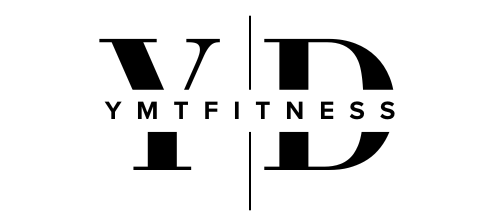Achieving a strong, well-defined core is a goal for many fitness enthusiasts. Having a robust abs workout routine is crucial, but it’s equally important to understand the science behind abdominal development.
A well-trained core not only enhances your physical appearance but also contributes to a healthier lower back, reduces the risk of injury, and improves overall health and well-being. By combining an effective abs module with healthy strategies for reducing body fat, you can reveal your stronger, defined six-pack and achieve those coveted visible abs.
Our comprehensive guide will walk you through the process of developing visible abs, from understanding the anatomy to practical workout routines, helping you learn how to get abs that are both strong and visible.
Key Takeaways
- Understand the importance of targeted training for abdominal development.
- Learn how to combine exercise techniques with nutritional strategies.
- Discover the benefits of a strong core beyond aesthetics.
- Debunk common myths about “spot reduction” in abdominal training.
- Gain actionable steps to strengthen your core and achieve visible abs.
Understanding the Anatomy of Abs
A well-defined abdominal area is not just about aesthetics; it’s rooted in understanding the intricate anatomy of the core. The core muscles, often referred to in the context of achieving visible abs, comprise more than just the rectus abdominis. It’s a complex series of muscles that span from the hips to the thoracic spine, including both superficial and deep layers.
What Makes Up the Six-Pack Muscles
The rectus abdominis is the muscle responsible for the “six-pack” appearance. However, it’s just one part of the core musculature. The rectus abdominis is a long, flat muscle that extends from the pubic bone to the xiphoid process, playing a crucial role in spinal flexion and stability.
The Role of Core Muscles Beyond Aesthetics
Beyond the rectus abdominis, other vital core muscles include the transverse abdominis, multifidus, diaphragm, pelvic floor, internal and external obliques, and quadratus lumborum. These muscles work together to stabilize the spine, facilitate movement, and support bodily functions. A strong core enhances athletic performance, reduces lower back pain, and improves posture.
| Core Muscle | Function |
|---|---|
| Rectus Abdominis | Spinal flexion, stability |
| Transverse Abdominis | Core stabilization, compression |
| Obliques (Internal & External) | Rotational movement, lateral flexion |
Understanding and training these muscles comprehensively can lead to better overall core strength, improved posture, and a more defined abdominal area. This holistic approach to core training is essential for both aesthetic goals and functional strength.
Factors Affecting Abs Visibility
Achieving visible abs is not just about exercising; several factors contribute to their visibility. While a consistent abs workout and a well-structured abs module are crucial, other elements play significant roles in revealing defined abs.
The Truth About Body Fat Percentage
Body fat percentage is a critical determinant of abs visibility. A lower body fat percentage is essential to reveal the muscle definition achieved through an effective abs workout. Typically, men need to be below 10-12% body fat, while women need to be around 16-18% or lower.
Genetic Factors and Fat Distribution
Genetics significantly influence how and where your body stores fat. Some people may genetically store more fat around their abdominal area, making it harder to achieve visible abs despite a rigorous abs module. Understanding your genetic predispositions can help tailor your fitness and nutrition plan.
Lifestyle Influences on Abs Definition
Lifestyle factors, including sleep quality, stress levels, and dietary habits, significantly impact abs visibility. For instance, poor sleep can disrupt hormone regulation, leading to increased fat storage around the abdomen.
- Sleep deprivation affects hormones like ghrelin, leptin, and insulin, promoting hunger and fat storage.
- Chronic stress triggers cortisol production, which encourages fat storage in the abdominal region.
- Alcohol consumption can add empty calories and reduce fat metabolism.
- Consistency in workout routines is key; sporadic intense workouts are less effective.
Managing these lifestyle factors is crucial for revealing defined abs.

Effective Abs Workout Module
Creating an abs workout module that yields results involves a blend of static and dynamic exercises. A well-designed module is crucial for achieving defined abs and enhancing overall core strength.
Comprehensive Core Training Principles
A comprehensive abs module should target the core muscles from multiple angles. This involves understanding the principles of core training, which include engaging the muscles in different planes of motion. To design an effective core routine, one should pick a static and dynamic exercise in each plane of motion.
Static vs. Dynamic Exercises for Complete Development
Static exercises, such as planks, are essential for building endurance, while dynamic exercises, like crunches, help improve muscle strength. A combination of both is necessary for complete development. Static exercises engage the muscles at a constant level, whereas dynamic exercises involve movement, which can help in improving muscle flexibility and strength.
Sample Abs Module Workout Routine
A sample abs module workout routine could include:
- Begin with a 5-minute dynamic warm-up to increase blood flow to the core region.
- Sagittal plane training: Perform 3 sets of 30-60 second planks followed by 3 sets of 12-15 slow, controlled crunches.
- Frontal plane training: Hold 3 sets of 20-40 second side planks on each side, then perform 3 sets of 12-15 side bends with light resistance.
- Transverse plane training: Maintain 3 sets of 20-40 second Pallof press holds, followed by 3 sets of 12-15 Russian twists with appropriate weight.
This comprehensive abs module can be performed 2-3 times weekly, allowing at least 48 hours between sessions for recovery and growth. For beginners, focus on proper form with bodyweight exercises before adding resistance; intermediate and advanced trainees should progressively increase difficulty.
Nutrition and Lifestyle Strategies for Defined Abs
Unlocking visible abs involves a multifaceted strategy that encompasses not only exercise but also nutrition, sleep, and stress management. A well-rounded approach is essential for achieving defined abs.
Optimal Nutrition for Revealing Your Six-Pack
A balanced diet is crucial for reducing body fat and revealing the definition of your abs. Focus on consuming lean proteins, complex carbohydrates, and healthy fats. Proper nutrition helps in regulating hunger hormones and supporting muscle recovery.
Nutrition plays a pivotal role in fat loss. Ensuring you’re in a calorie deficit while maintaining muscle mass is key. This involves eating nutrient-dense foods and avoiding excessive sugar and processed foods.

Sleep, Stress, and Recovery Essentials
Quality sleep and effective stress management are vital for hormonal balance, which directly impacts fat storage around the abdominal area. Research indicates that sleeping fewer than 7 hours per night is associated with greater rates of obesity and weight gain due to the negative effects on ghrelin, leptin, and insulin.
- Prioritize 7-9 hours of sleep nightly to support hormonal balance and recovery.
- Implement stress management techniques like meditation, deep breathing, or yoga to lower cortisol levels.
- Ensure proper recovery between workouts to avoid overtraining, which can increase stress hormones and inflammation.
By focusing on these lifestyle strategies, you can better support your abs workout and achieve a more defined core.
Conclusion
The journey to defined abs requires a comprehensive approach that includes targeted workouts, comprehensive core training, and proper nutrition.
A well-structured abs module can help you achieve complete core development by addressing all planes of motion.
To achieve visible abs, focus on reducing body fat percentage through a consistent nutrition plan and lifestyle optimization.
By understanding that core strength goes beyond aesthetics and implementing the strategies outlined, you can achieve a stronger, healthier core and improve overall athletic performance.
FAQ
What is the ideal body fat percentage to achieve visible abs?
For men, a body fat percentage of around 6-9% is typically required to achieve visible abs, while for women, it’s around 16-19%. However, this can vary depending on individual factors such as genetics and muscle mass.
How often should I work out my abs to achieve defined abs?
It’s recommended to train your core muscles 2-3 times per week, allowing for adequate recovery time in between. A well-rounded workout routine that includes static and dynamic exercises can help achieve defined abs.
Can I achieve defined abs through diet alone?
While a healthy diet is crucial for revealing your six-pack, it’s not enough on its own. A combination of regular exercise, including core training, and a balanced diet can help achieve defined abs.
How does stress affect my ability to achieve defined abs?
High stress levels can lead to increased cortisol production, which can contribute to belly fat storage and make it harder to achieve defined abs. Practicing stress-reducing techniques, such as meditation or yoga, can help mitigate this effect.
What is the role of sleep in achieving defined abs?
Adequate sleep is essential for muscle recovery and growth, including the core muscles. Aim for 7-9 hours of sleep per night to help support your fitness goals, including achieving defined abs.
Can I achieve defined abs with a genetic predisposition to store fat around my midsection?
While genetics can play a role in fat distribution, a consistent and well-planned workout routine, combined with a healthy diet and lifestyle, can still help achieve defined abs. It may require more patience and dedication, but it’s not impossible.



